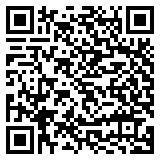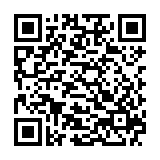In our globalized world, businesses and individuals often need help with language tasks. Whether it’s translating a document, transcribing an audio file, or localizing a website, outsourcing these tasks to experts can save time and ensure top-notch results. But where do you start? In this guide, we’ll walk you through everything you need to know about outsourcing language tasks, from choosing the right services to understanding the process.
Why Should You Consider Outsourcing Language Tasks?
Outsourcing language tasks offers several benefits:
- Access to Expertise: Professionals know the nuances of languages, ensuring accuracy and cultural relevance.
- Time Efficiency: Letting experts handle these tasks frees you to focus on other priorities.
- Cost Savings: Investing in professional services often costs less than fixing mistakes from DIY efforts.
- Scalability: Whether you have one project or a hundred, language service providers can handle your needs.
Commonly Outsourced Language Tasks
Translation
Translation involves converting written text from one language to another while maintaining meaning and tone. It’s essential for documents, websites, marketing materials, and more.
Transcription
Transcription is the process of converting audio or video content into written text. This is commonly used for interviews, lectures, and legal or medical recordings.
Localization
Localization goes beyond translation by adapting content to fit the cultural context of a specific region. This ensures your message resonates with local audiences.
Subtitling and Captioning
These tasks involve adding text to videos, either as subtitles for foreign languages or captions for accessibility.
Interpretation
Unlike translation, interpretation happens in real time, either in person, over the phone, or via video calls. It’s crucial for meetings, conferences, and legal proceedings.
How to Choose the Right Language Service
Not all language services are created equal. Here’s what to consider when selecting a provider:
1. Define Your Needs
Start by identifying the specific tasks you need help with. For example, do you need a legal document translated or a podcast transcribed? Being clear about your requirements will help you find the right fit.
2. Check Credentials and Experience
Look for providers with a proven track record in the type of service you need. For example, a translator specializing in legal documents may not be the best choice for creative marketing copy.
3. Assess Quality Assurance Processes
Ask about the provider’s quality control methods. Do they use professional editors? Is there a review process to catch errors?
4. Consider Turnaround Times
Make sure the provider can deliver within your timeline. If you have urgent projects, check if they offer expedited services.
5. Evaluate Technology and Tools
Some providers use advanced tools like CAT (computer-assisted translation) software or AI-powered transcription to enhance efficiency. Ask how technology is integrated into their workflow.
6. Request Samples or References
Ask for samples of their work or references from previous clients to gauge the quality of their services.
Understanding the Process
Here’s a step-by-step look at how outsourcing language tasks typically works:
Step 1: Initial Consultation
You’ll discuss your project details, including the type of service, target audience, timeline, and budget.
Step 2: Project Assessment
The provider evaluates your requirements and assigns the task to a specialist with expertise in your area.
Step 3: Execution
The professional works on your project, whether it’s translating a document, transcribing audio, or localizing a website.
Step 4: Review and Quality Check
The work is reviewed for accuracy and quality. Some providers involve a second linguist or editor to ensure perfection.
Step 5: Delivery
You receive the completed work in your preferred format.
Step 6: Feedback and Revisions
If needed, you can provide feedback and request adjustments. Many providers include a revision phase as part of their service.
Tips for Successful Outsourcing
- Be Clear and Detailed: Provide as much information as possible about your project, including reference materials or style guides.
- Communicate Regularly: Stay in touch with the provider to track progress and address questions.
- Plan Ahead: Give yourself enough time for revisions, especially for complex projects.
- Budget Wisely: While cost is a factor, don’t sacrifice quality for a lower price.
Fun Facts About Language Services
- A Growing Industry: The global language services market is projected to reach over $65 billion by 2025.
- Fast Transcription: Skilled transcriptionists can type up to 100 words per minute.
- Creative Challenges: Translating jokes, idioms, and poetry often requires cultural expertise and creative flair.
Wrapping It Up
Outsourcing language tasks is a smart move for anyone who needs professional, high-quality results. By understanding the types of services available and following the tips in this guide, you can ensure a smooth, successful outsourcing experience.
From translation to transcription, the right language service provider can help you connect with audiences, streamline workflows, and bring your projects to life—no matter the language barrier.





0 Comments